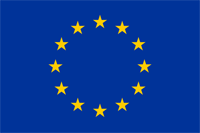European Union
 The European Union is a supranational organisation of countries given power by European treaties to create legislation that supersedes all national legislation in areas including, but not limited to, trade, border control, foreign policy, agriculture, defence and industry. The spirit of the cooperation between European countries is to gain strength in unity. Since its inception in 1951, European countries within the union have not experienced a war between member countries; it has established its own currency and its own internal borders.
The European Union is a supranational organisation of countries given power by European treaties to create legislation that supersedes all national legislation in areas including, but not limited to, trade, border control, foreign policy, agriculture, defence and industry. The spirit of the cooperation between European countries is to gain strength in unity. Since its inception in 1951, European countries within the union have not experienced a war between member countries; it has established its own currency and its own internal borders.
The European Union today has 27 member states, 7 candidate states, an anthem and its own flag. Its international significance has become important and the CIA World Factbook has recently created a separate entry for the European Union alongside other country records. Here are some basic facts about the European Union.
Conventional name: European Union
Abbreviation: EU
Capital city: Brussels, Belgium
Population: 491,582,852 (July 2009 est.)
Area: 4,324,782 sq km
Location: Europe, between the North Atlantic Ocean in the west and Russia and Belarus in the east.
Time zone: GMT (UK and Ireland); GMT+1 (all other states)
Official languages: Bulgarian, Czech, Danish, Dutch, English, Estonian, Finnish, French, Gaelic, German, Greek, Hungarian, Italian, Latvian, Lithuanian, Maltese, Polish, Portuguese, Romanian, Slovak, Slovenian, Spanish, Swedish
International dial code: N/A
Internet domain: .eu
Monetary unit: Euros (€)
History
In 1951, two men from France, Foreign Minister Robert Schuman and Jean Monnet, presented a plan to bring Europe together economically and politically. Their plan was the unification of European countries under one intergovernmental organisation. Many years later this would eventually become the European Union. The first step towards a regional integration was the signing of the European Coal and Steel Community (ECSC) treaty in 1951. The countries that originally entered this agreement were France, Belgium, Germany, the Netherlands, Luxembourg and Italy.
The administrative wing of the ECSC became the current European Commission and the ECSC also set up the Council of Ministers, The European Court of Justice and the European Parliament. In 1957 the Treaty of Rome established the European Economic Community which has now evolved into the European Union and has expanded to a membership of 27 countries.
Brussels Regime
What is the Brussels Regime and what does it have to do with Brussels? The Brussels Regime gives jurisdiction and enforcement of judgements to foreign judges within member states. It ultimately allows for efficient internal markets to develop within Europe – providing the means to speed up integration. The court that judges the case is the one where the party is domiciled to avoid the need for parallel proceedings (e.g. a French national can be tried in Germany without the need for a separate trial in France if the defendant is domiciled in Germany).
It sets out the rules for disputes pertaining to a civil or commercial nature carried out in member states - but excludes such personal cases as bankruptcies, family law or social security. The Brussels Regime is a common name given to a set of legal conventions: the Brussels Convention (1968) and the Lugano Convention (1988) which has now been superseded by the Brussels I Regulation and absorbed into European Union Law for all member countries.
Institutions
Brussels is home to many European Union institutions (offices, archives and meeting places), which has given rise to its European capital status. Although Strasboug (France) is the location for parliamentary plenary and Luxembourg is home to the European Court of Justice and European Court of Auditors, Brussels has the majority of European Union’s institutions – the European Parliament, the Council of Ministers, the European Commission and the European Council holds all of its quarterly summits in Brussels.
This is not by accident; the Belgian government has spent time and money setting up offices for early incarnations of the European Union, starting with the completion of the Berlaymont in the 1960s. Brussels’ infrastructure, public transport, high-speed railways and a large international airport have also bolstered its ability to host these institutions.
These institutions have now become a daily part of Brussels life. It has attracted international expatriates, international non-governmental organisations and multinational regional headquarters into Brussels, bringing jobs and a cosmopolitan vibrancy to the city, which is now also called the European Village. You can take guided tours at some institutions.